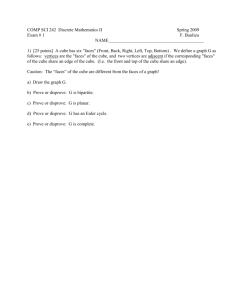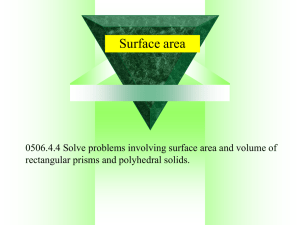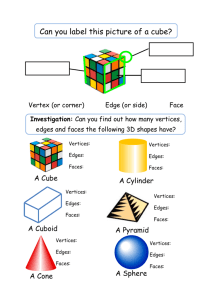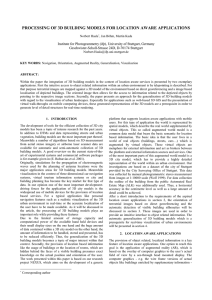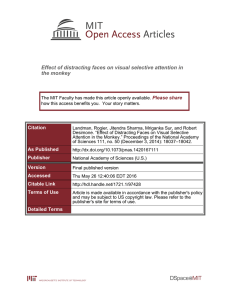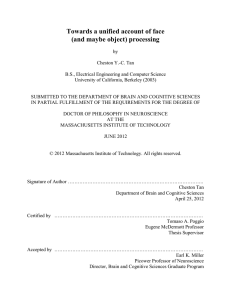Math 527/427 Homework 4—Midterm 10 November 2015
advertisement
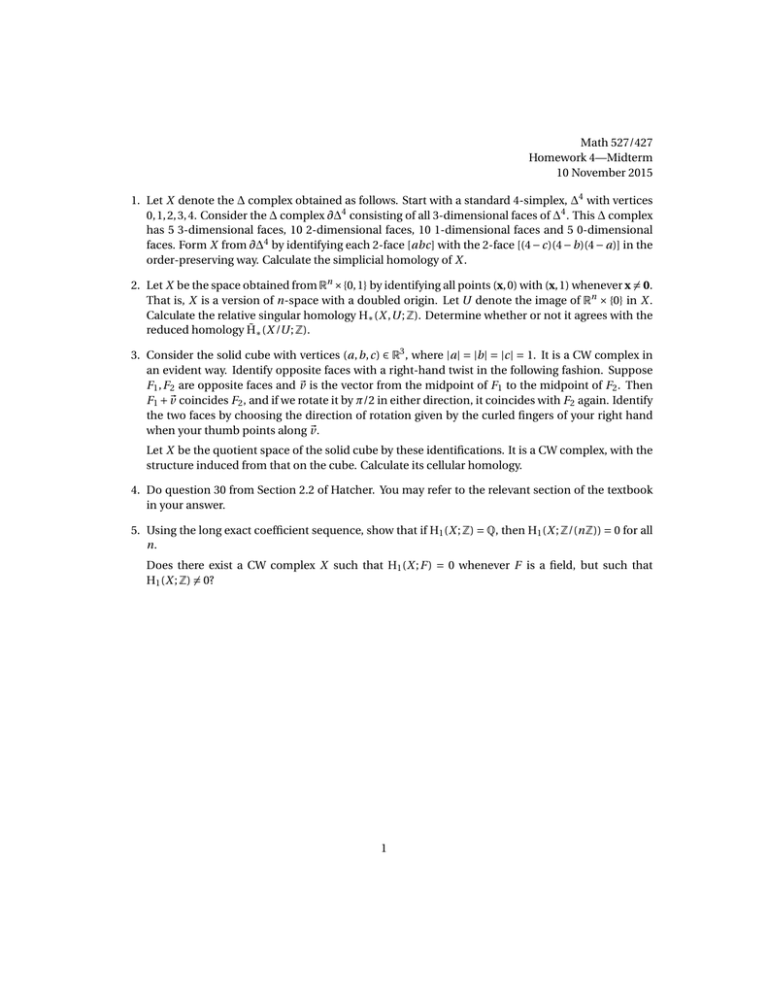
Math 527/427
Homework 4—Midterm
10 November 2015
1. Let X denote the ∆ complex obtained as follows. Start with a standard 4-simplex, ∆4 with vertices
0, 1, 2, 3, 4. Consider the ∆ complex ∂∆4 consisting of all 3-dimensional faces of ∆4 . This ∆ complex
has 5 3-dimensional faces, 10 2-dimensional faces, 10 1-dimensional faces and 5 0-dimensional
faces. Form X from ∂∆4 by identifying each 2-face [abc] with the 2-face [(4 − c)(4 − b)(4 − a)] in the
order-preserving way. Calculate the simplicial homology of X .
2. Let X be the space obtained from Rn ×{0, 1} by identifying all points (x, 0) with (x, 1) whenever x 6= 0.
That is, X is a version of n-space with a doubled origin. Let U denote the image of Rn × {0} in X .
Calculate the relative singular homology H∗ (X ,U ; Z). Determine whether or not it agrees with the
reduced homology H̃∗ (X /U ; Z).
3. Consider the solid cube with vertices (a, b, c) ∈ R3 , where |a| = |b| = |c| = 1. It is a CW complex in
an evident way. Identify opposite faces with a right-hand twist in the following fashion. Suppose
F 1 , F 2 are opposite faces and ~
v is the vector from the midpoint of F 1 to the midpoint of F 2 . Then
F 1 +~
v coincides F 2 , and if we rotate it by π/2 in either direction, it coincides with F 2 again. Identify
the two faces by choosing the direction of rotation given by the curled fingers of your right hand
when your thumb points along ~
v.
Let X be the quotient space of the solid cube by these identifications. It is a CW complex, with the
structure induced from that on the cube. Calculate its cellular homology.
4. Do question 30 from Section 2.2 of Hatcher. You may refer to the relevant section of the textbook
in your answer.
5. Using the long exact coefficient sequence, show that if H1 (X ; Z) = Q, then H1 (X ; Z/(nZ)) = 0 for all
n.
Does there exist a CW complex X such that H1 (X ; F ) = 0 whenever F is a field, but such that
H1 (X ; Z) 6= 0?
1

